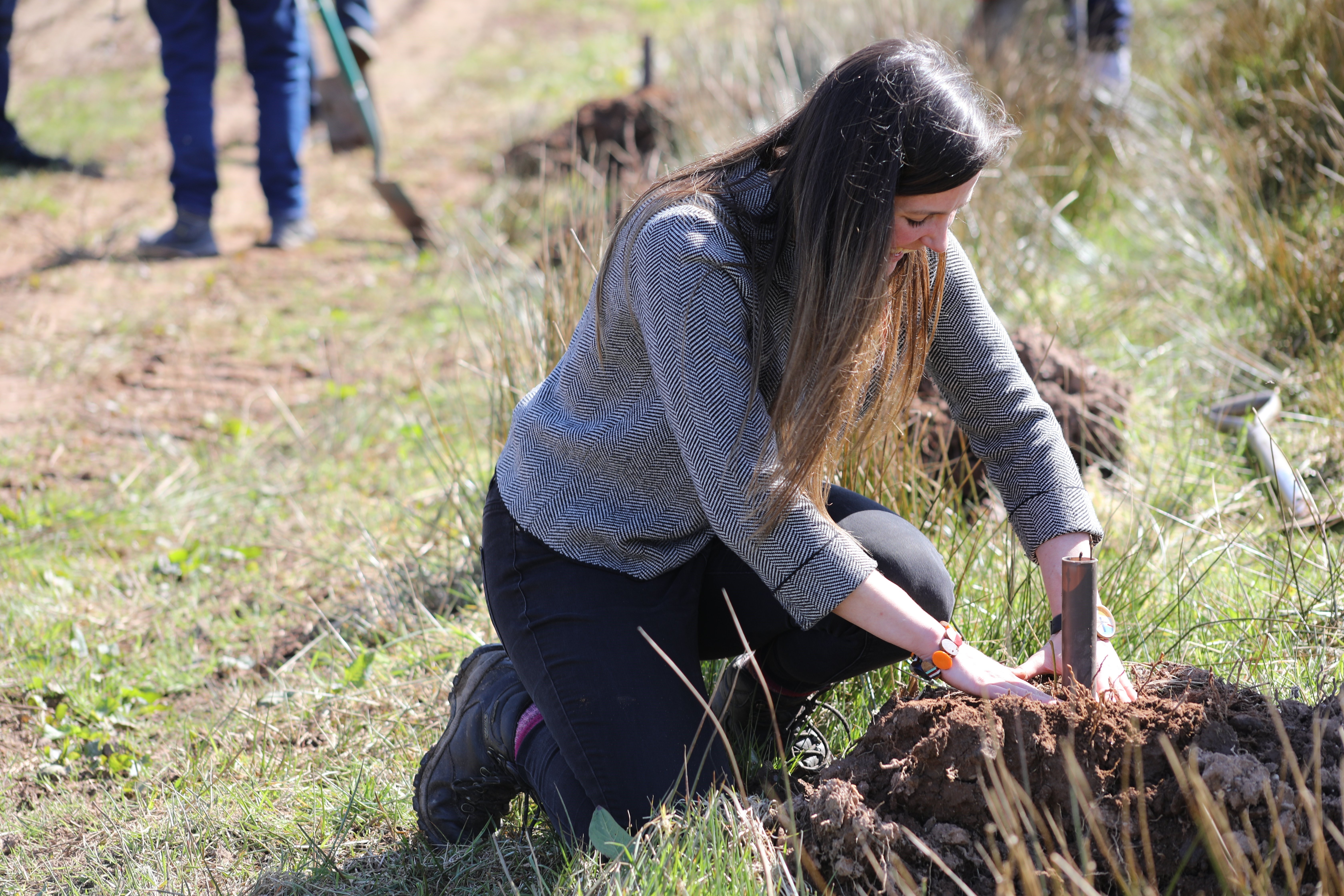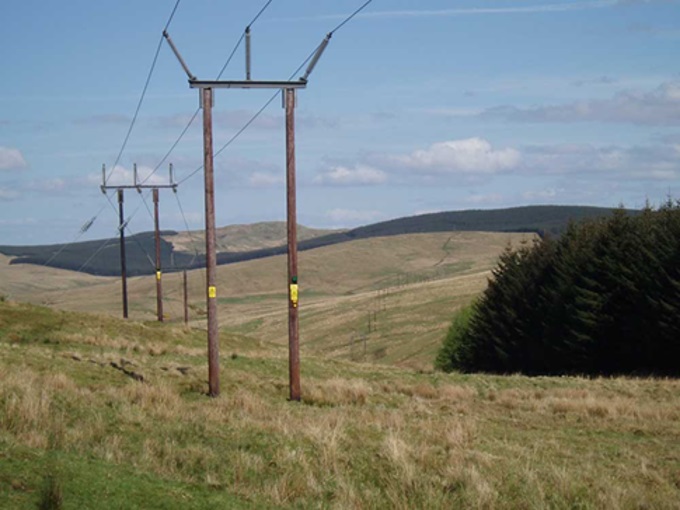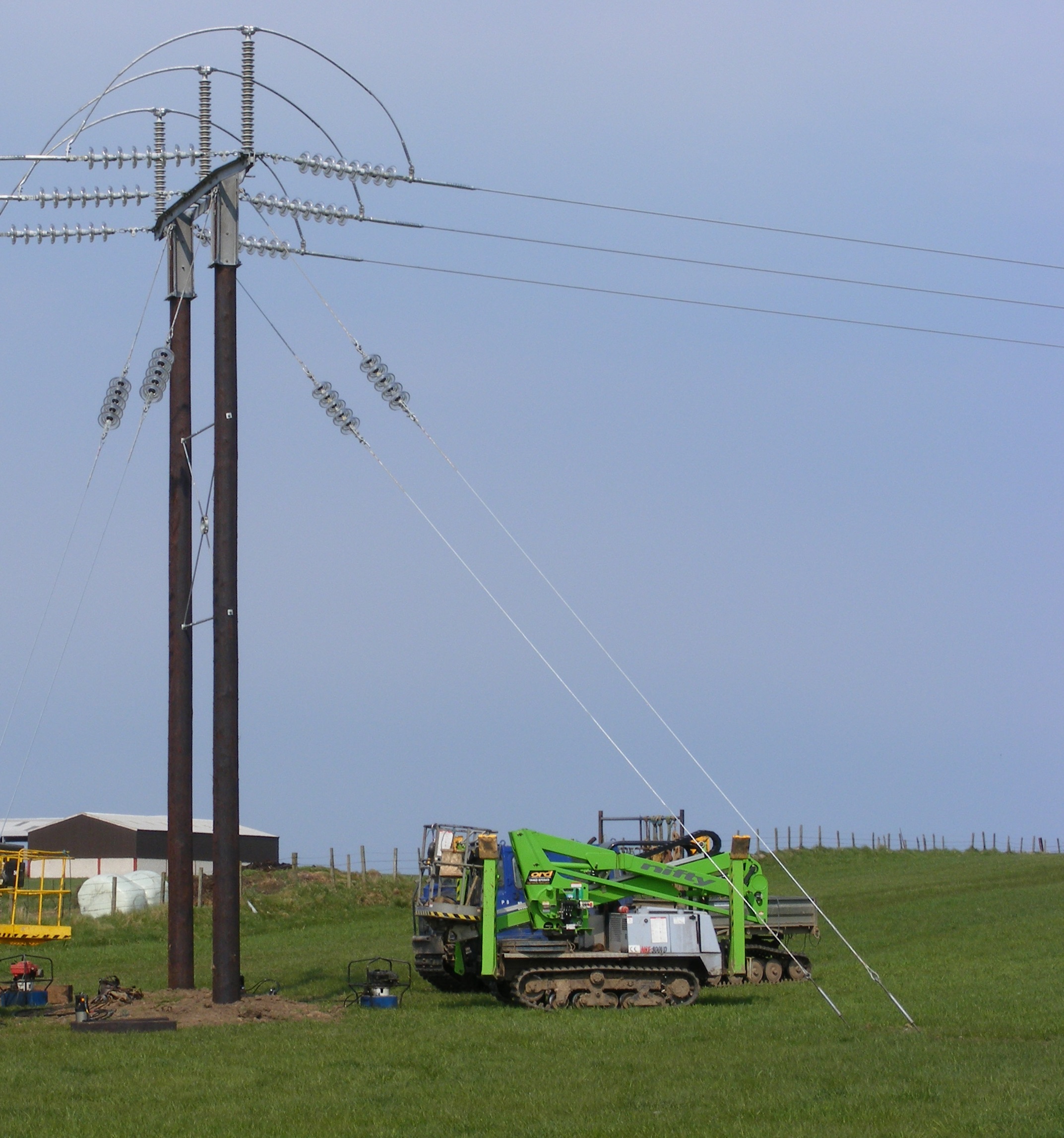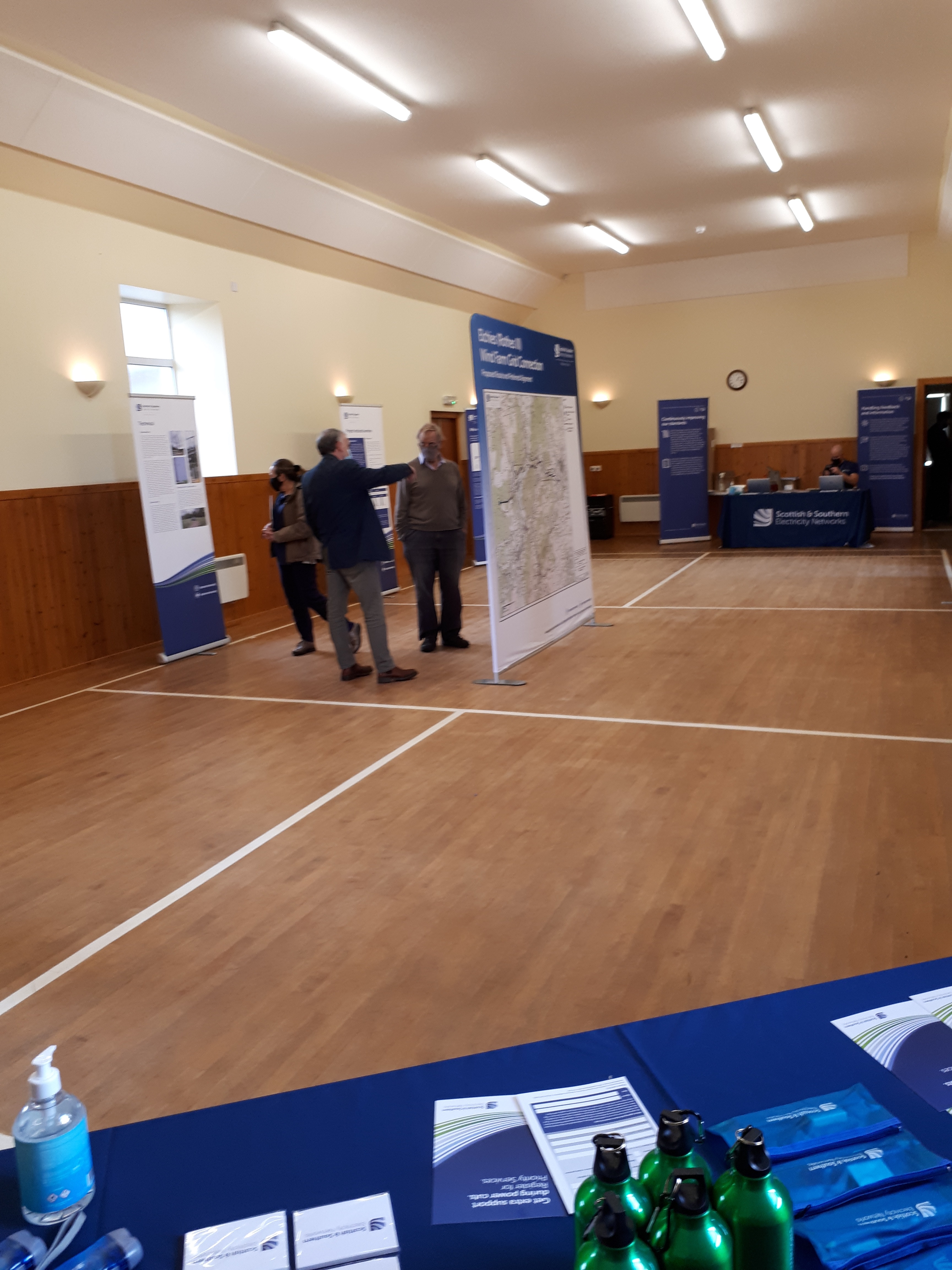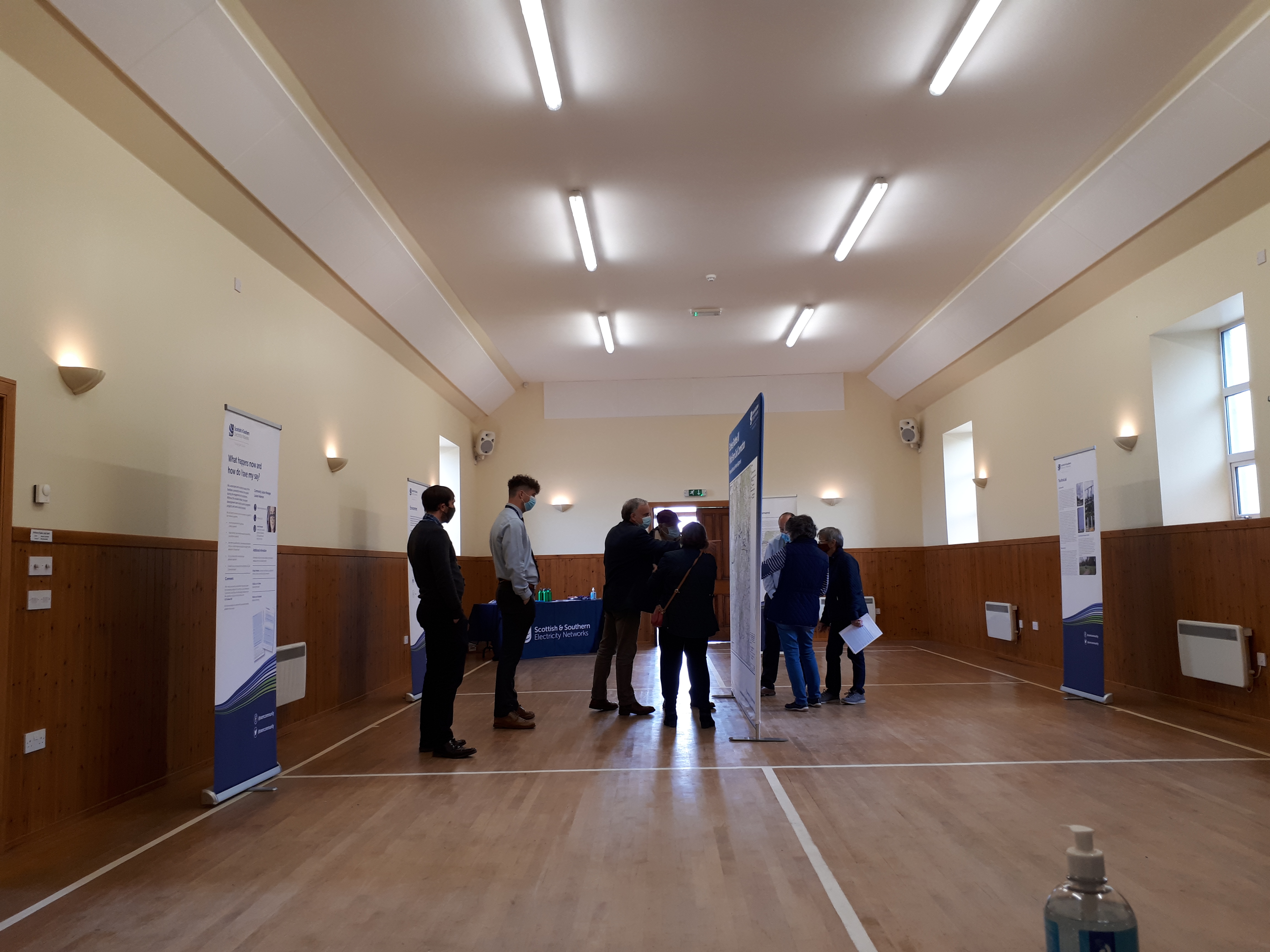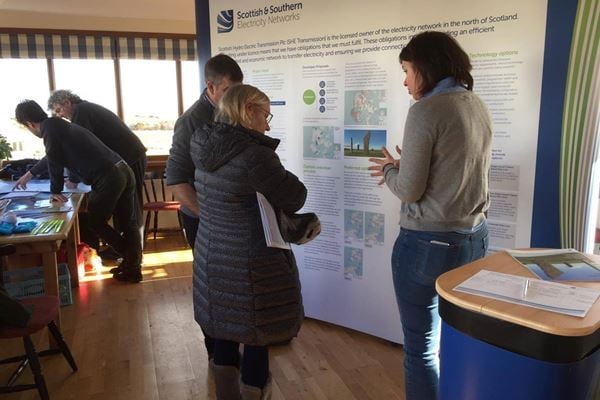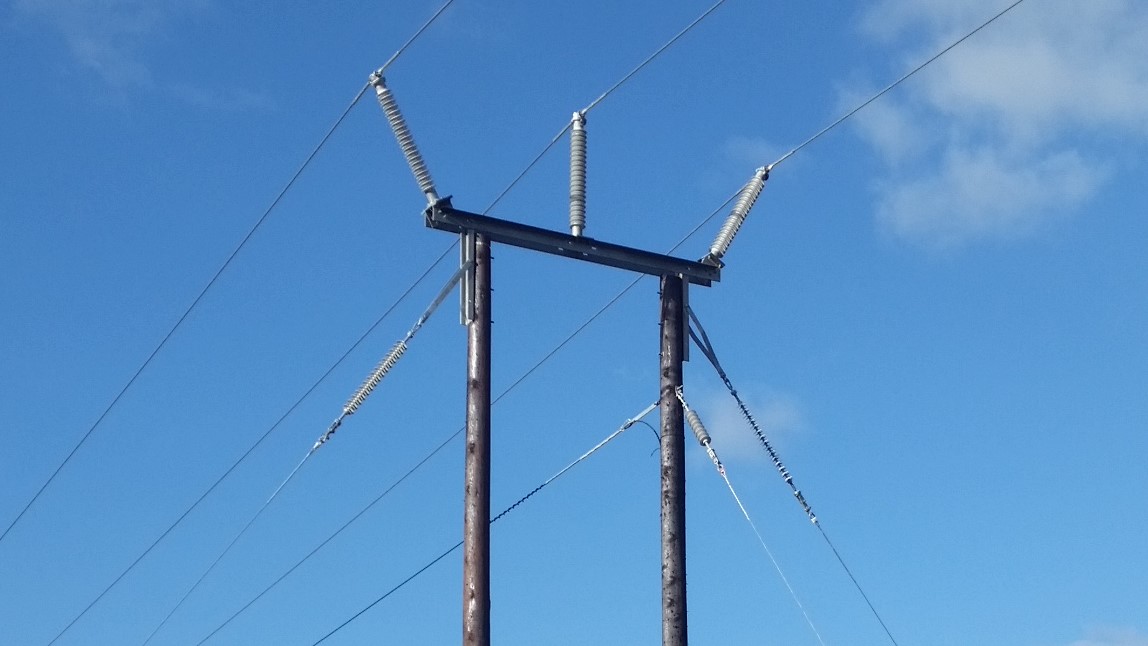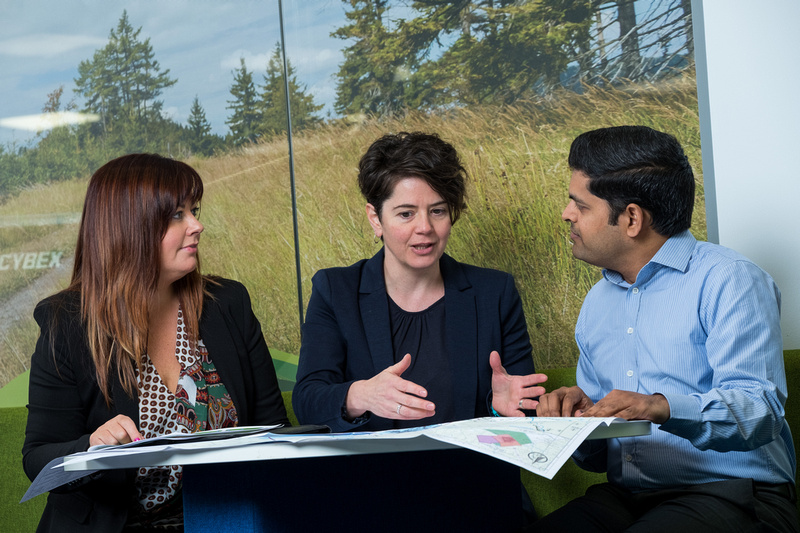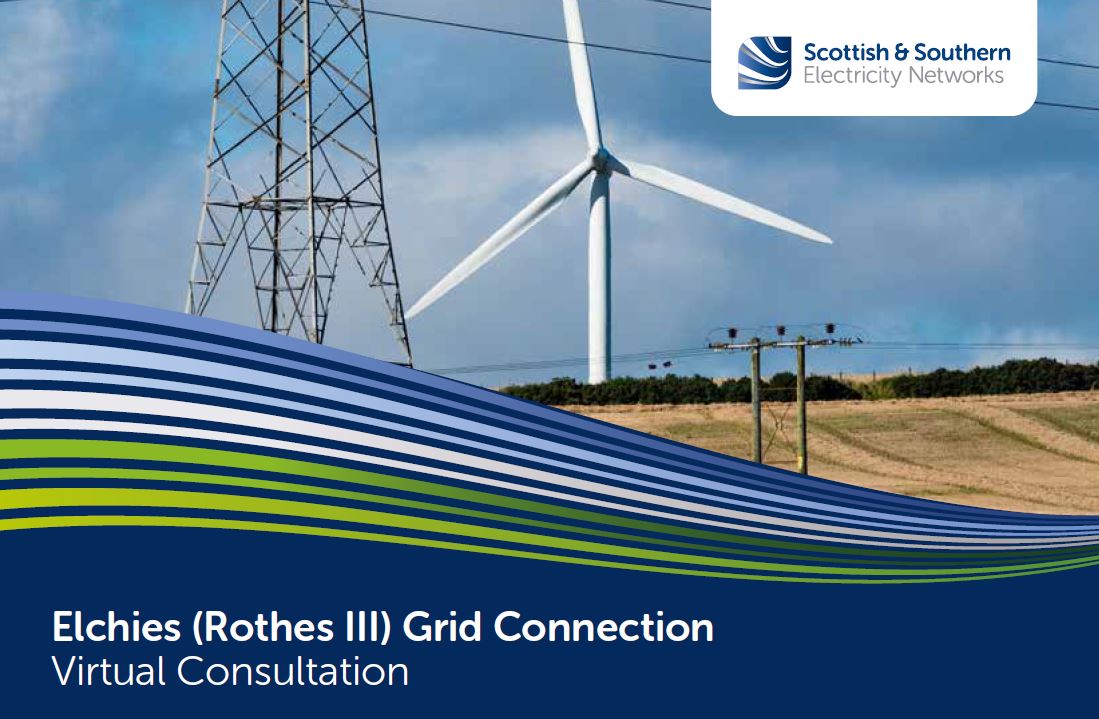Overview
About the Project
Elchies Wind Farm Ltd have submitted a connection application for their prospective 99MW Wind Farm development at Elchies, which is located approximately 23km south-west of Blackhillock in Morayshire.
The connection will be a 24km 132kV single circuit trident wood pole overhead line connecting from Elchies 132/33kV Substation to Blackhillock 132kV Substation. We will also establish a new 132/33kV outdoor substation at Elchies Wind Farm site.

Why is the Project Required?
As part of our statutory and transmission licence obligations, we have a number of duties including:
- the development and maintenance of an efficient, coordinated and economical system of electricity transmission
- to facilitate competition in the supply and generation of electricity
- to ensure that the security of the network is maintained as the demand and/or generation connections change over time
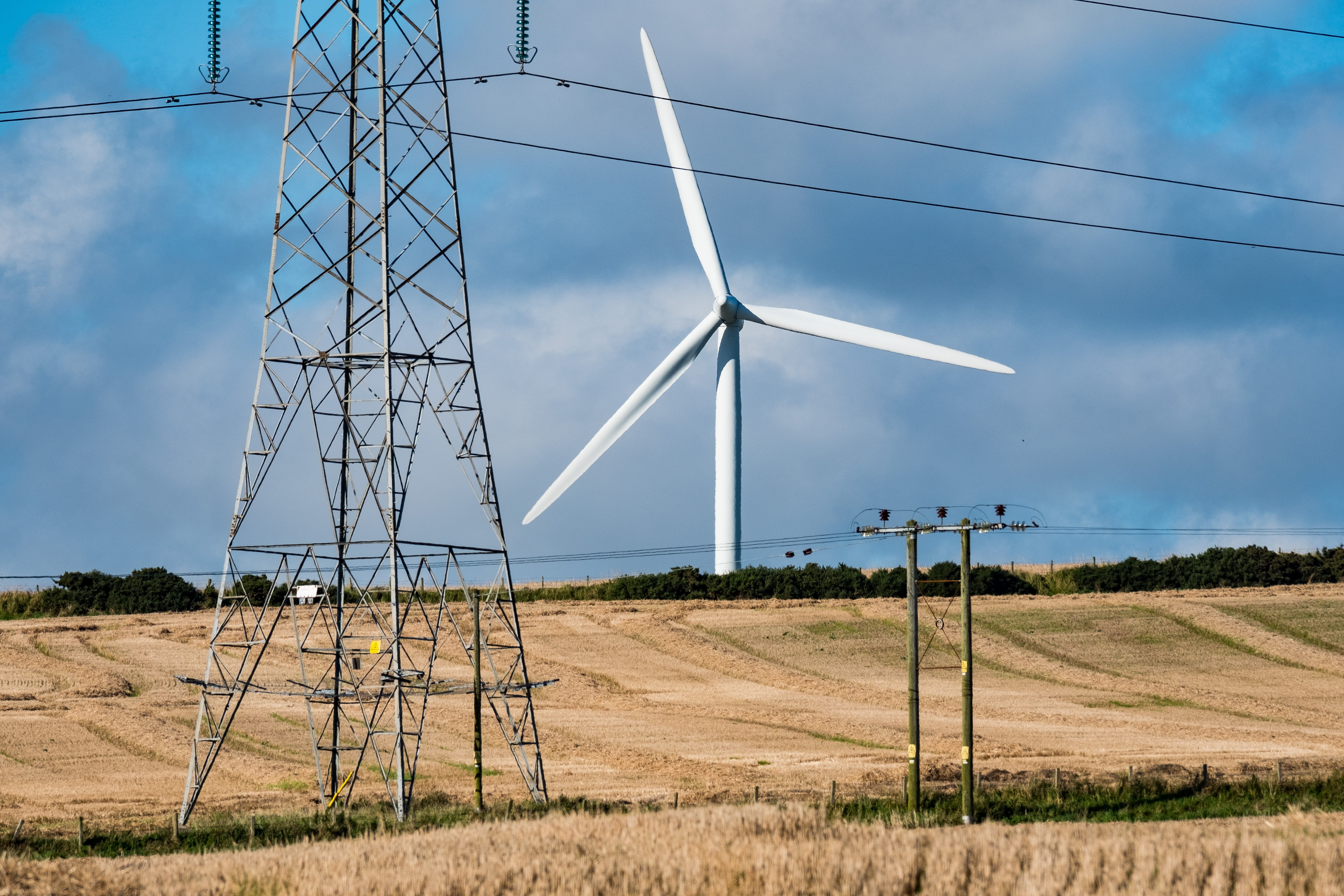
Community Engagement
Throughout the life of our projects, we aim to work positively with local communities and keep people informed about what we are doing. This is particularly important when we are developing a proposal and we want to understand what local people think about our plans.
We endeavour to take the time to discuss proposals with local community councils, encourage engagement from the wider community and listen to the feedback we receive.
We will do our best to answer any questions and address issues or concerns that are raised with us.
When our project progresses into construction, we will continue working closely with the local community to ensure that our work has as little impact on the lives of those living and working in the area and as many long term positive effects as possible.
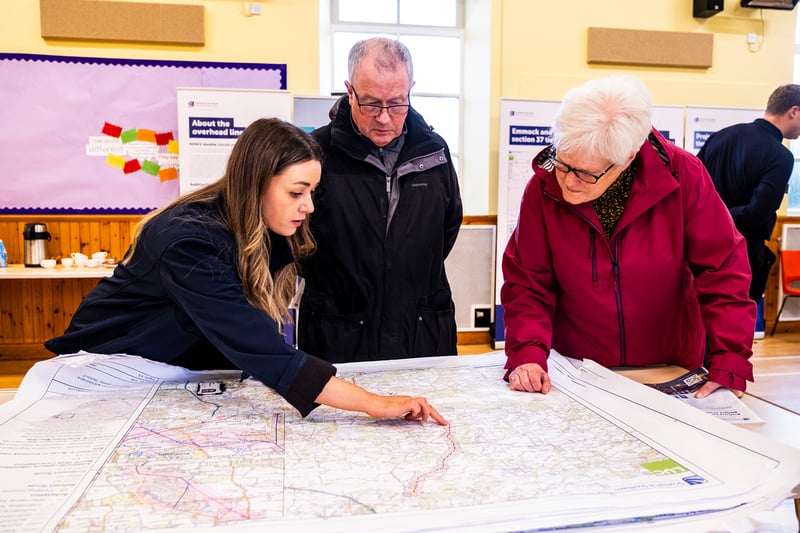
How we’re embracing artificial intelligence (AI)
We intend to use AI to assist our experienced teams in the analysis of your feedback, so we can categorise key points raised more quickly. You can learn more about how we’re utilising AI on this dedicated web page.
Project Updates
Project updates
Documents
Section 37 covering letter
-
S37 Cover Letter
- Type:
- Date:
- 14 March 2023
- Size:
- 174.1 KB
Section 37 planning statement
-
S37 Planning Statement
- Type:
- Date:
- 14 March 2023
- Size:
- 543.7 KB
Section 37 chapters
-
Chapter 1 - Introduction and Background.pdf
- Type:
- Date:
- 14 March 2023
- Size:
- 254.3 KB
-
Chapter 2 - Routeing Process and Alternatives.pdf
- Type:
- Date:
- 14 March 2023
- Size:
- 354 KB
-
Chapter 3 - The Proposed Development.pdf
- Type:
- Date:
- 14 March 2023
- Size:
- 750.8 KB
-
Chapter 4 - Landscape and Visual.pdf
- Type:
- Date:
- 14 March 2023
- Size:
- 589.4 KB
-
Chapter 5 - Ecology.pdf
- Type:
- Date:
- 14 March 2023
- Size:
- 455.2 KB
-
Chapter 6 - Ornithology.pdf
- Type:
- Date:
- 14 March 2023
- Size:
- 356.4 KB
-
Chapter 7 - Geology, Hydrology and Hydrogeology.pdf
- Type:
- Date:
- 14 March 2023
- Size:
- 369.7 KB
-
Chapter 8 - Cultural Heritage.pdf
- Type:
- Date:
- 14 March 2023
- Size:
- 429.2 KB
-
Chapter 9 - Forestry.pdf
- Type:
- Date:
- 14 March 2023
- Size:
- 386.4 KB
-
Front Cover, Contents and Glossary.pdf
- Type:
- Date:
- 14 March 2023
- Size:
- 289.8 KB
Section 37 figures
-
Figure 1.1 - Location Plan.pdf
- Type:
- Date:
- 14 March 2023
- Size:
- 7 MB
-
Figure 2.1 - Route Options.pdf
- Type:
- Date:
- 14 March 2023
- Size:
- 5.7 MB
-
Figure 2.2 - Alignment Variants Presented at Alignment Stage Consultation.pdf
- Type:
- Date:
- 14 March 2023
- Size:
- 8.2 MB
-
Figure 2.3 - Alignment Variants Generated Post Alignment Stage Consultation.pdf
- Type:
- Date:
- 14 March 2023
- Size:
- 6.7 MB
-
Figure 3.1a-c - Proposed Development.pdf
- Type:
- Date:
- 14 March 2023
- Size:
- 5.5 MB
-
Figure 3.2 - Viewpoint Location 1 - Kirkhill.pdf
- Type:
- Date:
- 14 March 2023
- Size:
- 6.6 MB
-
Figure 4.1a-c - Study Area with ZTV.pdf
- Type:
- Date:
- 14 March 2023
- Size:
- 6.7 MB
-
Figure 4.2a-c -Landscape Character and Designations with ZTV.pdf
- Type:
- Date:
- 14 March 2023
- Size:
- 6.3 MB
-
Figure 4.3a-c - Visual Receptors with ZTV.pdf
- Type:
- Date:
- 14 March 2023
- Size:
- 6.6 MB
-
Figure 5.1 - Sites of Nature Conservation - Ecology.pdf
- Type:
- Date:
- 14 March 2023
- Size:
- 1.6 MB
-
Figure 5.2a-c - Phase 1 Habitats.pdf
- Type:
- Date:
- 14 March 2023
- Size:
- 8.9 MB
-
Figure 5.3 - Protected Species Records (Non-confidential).pdf
- Type:
- Date:
- 14 March 2023
- Size:
- 7 MB
-
Figure 5.5 - Proposed Works within Proximity to River Spey SAC.pdf
- Type:
- Date:
- 14 March 2023
- Size:
- 1.9 MB
-
Figure 6.1 - Sites of Nature Conservation - Ornithology.pdf
- Type:
- Date:
- 14 March 2023
- Size:
- 1.3 MB
-
Figure 6.2a-e - Sensitive Bird Territories.pdf
- Type:
- Date:
- 14 March 2023
- Size:
- 9 MB
-
Figure 7.10 - Regional Hydrogeology.pdf
- Type:
- Date:
- 14 March 2023
- Size:
- 470.7 KB
-
Figure 7.1a-d - Local Hydrology.pdf
- Type:
- Date:
- 14 March 2023
- Size:
- 1.9 MB
-
Figure 7.2 - Soils.pdf
- Type:
- Date:
- 14 March 2023
- Size:
- 624.4 KB
-
Figure 7.3 - Superficial Geology.pdf
- Type:
- Date:
- 14 March 2023
- Size:
- 625.7 KB
-
Figure 7.4 - Peatland Classification.pdf
- Type:
- Date:
- 14 March 2023
- Size:
- 517.9 KB
-
Figure 7.5a-c - Peat Depth.pdf
- Type:
- Date:
- 14 March 2023
- Size:
- 1.3 MB
-
Figure 7.6a-c - Peat Depth Greater than 0.5 m.pdf
- Type:
- Date:
- 14 March 2023
- Size:
- 1.6 MB
-
Figure 7.7a-c - Peat Slide Risk.pdf
- Type:
- Date:
- 14 March 2023
- Size:
- 1.3 MB
-
Figure 7.8 - Bedrock Geology.pdf
- Type:
- Date:
- 14 March 2023
- Size:
- 551.9 KB
-
Figure 7.9 - Groundwater Vulnerability.pdf
- Type:
- Date:
- 14 March 2023
- Size:
- 386.1 KB
-
Figure 8.1a-e - Cultural Heritage Assets within the Inner Study Area.pdf
- Type:
- Date:
- 14 March 2023
- Size:
- 7.8 MB
-
Figure 8.2 - Cultural Heritage Assets within the Outer Study Area.pdf
- Type:
- Date:
- 14 March 2023
- Size:
- 4.4 MB
-
Figure 8.3 - CH1 - Church of Dundurcas (SM 5621).pdf
- Type:
- Date:
- 14 March 2023
- Size:
- 5.9 MB
-
Figure 8.4 - CH2 - Rothes Castle (SM 2455).pdf
- Type:
- Date:
- 14 March 2023
- Size:
- 5.6 MB
-
Figure 9.1a-h - Forest Felling Design.pdf
- Type:
- Date:
- 14 March 2023
- Size:
- 3.4 MB
-
Figure 9.2a-h - Landowner Boundaries.pdf
- Type:
- Date:
- 14 March 2023
- Size:
- 2.9 MB
Section 37 appendices
-
Appendices Front Cover and Contents.pdf
- Type:
- Date:
- 14 March 2023
- Size:
- 256.3 KB
-
Appendix 1.1 - Permitted Development Appraisal Works.pdf
- Type:
- Date:
- 14 March 2023
- Size:
- 6.1 MB
-
Appendix 1.2 - Screening Opinion Elchies (Rothes III) Wind Farm Grid Connection.pdf
- Type:
- Date:
- 14 March 2023
- Size:
- 348.1 KB
-
Appendix 3.1 - SSEN T - General Environmental Management Plans.pdf
- Type:
- Date:
- 14 March 2023
- Size:
- 4.2 MB
-
Appendix 3.2 - SSEN T - Transmission Species Protection Plans.pdf
- Type:
- Date:
- 14 March 2023
- Size:
- 3.4 MB
-
Appendix 3.3 - 3.3.1 - Construction Traffic Interface Schedule.pdf
- Type:
- Date:
- 14 March 2023
- Size:
- 7.2 MB
-
Appendix 3.3 - 3.3.2 - Buckie Harbour to Rothes III Wind Farm Route Study - Part 1.pdf
- Type:
- Date:
- 14 March 2023
- Size:
- 4 MB
-
Appendix 3.3 - 3.3.2 - Buckie Harbour to Rothes III Wind Farm Route Study - Part 2.pdf
- Type:
- Date:
- 14 March 2023
- Size:
- 8.3 MB
-
Appendix 3.3 - Transport Assessment.pdf
- Type:
- Date:
- 14 March 2023
- Size:
- 2.6 MB
-
Appendix 4.1 - Landscape Assessment Tables.pdf
- Type:
- Date:
- 14 March 2023
- Size:
- 344.3 KB
-
Appendix 4.2 - Visual Assessment Tables.pdf
- Type:
- Date:
- 14 March 2023
- Size:
- 413.2 KB
-
Appendix 5.1 - Ecology Fieldwork Survey Methodology.pdf
- Type:
- Date:
- 14 March 2023
- Size:
- 245.3 KB
-
Appendix 5.2A - Habitat Target Notes and Protected Species Records.pdf
- Type:
- Date:
- 14 March 2023
- Size:
- 1.9 MB
-
Appendix 5.3 - Information to Inform HRA - River Spey SAC.pdf
- Type:
- Date:
- 14 March 2023
- Size:
- 328.2 KB
-
Appendix 6.1 - Ornithology Survey Data.pdf
- Type:
- Date:
- 14 March 2023
- Size:
- 232.2 KB
-
Appendix 7.2 - Forestry Hydrology Report.pdf
- Type:
- Date:
- 14 March 2023
- Size:
- 2.1 MB
-
Appendix 8.1 - Cultural Heritage Assets in The Inner Study Area.pdf
- Type:
- Date:
- 14 March 2023
- Size:
- 289.5 KB
-
Appendix 8.2 - Cultural Heritage Assets in The Outer Study Area.pdf
- Type:
- Date:
- 14 March 2023
- Size:
- 274.4 KB
-
Appendix 9.1 - Woodland Reports.pdf
- Type:
- Date:
- 14 March 2023
- Size:
- 9.6 MB
-
Appendix 9.2 - Compensatory Planting Management Strategy.pdf
- Type:
- Date:
- 14 March 2023
- Size:
- 184.4 KB
-
Appendix 9.3 - Landscape appraisal (Sourden wood).pdf
- Type:
- Date:
- 14 March 2023
- Size:
- 6.9 MB
Alignment Report on Consultation
-
Elchies (Rothes III) Wind Farm Connection Report on Consultation - Alignment Options.pdf
- Type:
- Date:
- 21 November 2022
- Size:
- 748.3 KB
Report on Consultation appendix
-
Appendix 1 - Statutory and Non-Statutory Consultation Reponses Recieved at Routeing.pdf
- Type:
- Date:
- 21 November 2022
- Size:
- 174.4 KB
Report on consultation figures
-
Figure 1 - Alignment Variants Presented at Alignment Stage Consultation.pdf
- Type:
- Date:
- 21 November 2022
- Size:
- 8.2 MB
-
Figure 2 - Alignment Variants Generated Post Alignment Stage Consultation.pdf
- Type:
- Date:
- 21 November 2022
- Size:
- 5.4 MB
-
Figure 3 - Proposed Alignment.pdf
- Type:
- Date:
- 21 November 2022
- Size:
- 5.4 MB
Project documents
-
Alignment consultation document
- Type:
- Date:
- 26 September 2021
- Size:
- 1.3 MB
-
Alignment Consultation Document figure 2 proposed route and preferred alignment
- Type:
- Date:
- 26 September 2021
- Size:
- 15.3 MB
-
Alignment Consultation Document figure 1 alignment variants
- Type:
- Date:
- 26 September 2021
- Size:
- 15.4 MB
-
Alignment Consultation Document Figure 1 proposed route
- Type:
- Date:
- 26 September 2021
- Size:
- 16.7 MB
-
Alignment Consultation Document Figure 10 landuse and recreation
- Type:
- Date:
- 26 September 2021
- Size:
- 7.8 MB
-
Alignment Consultation Document figure 11 preferred alignment
- Type:
- Date:
- 26 September 2021
- Size:
- 14.2 MB
-
Alignment Consultation Document figure 2 alignment variants
- Type:
- Date:
- 26 September 2021
- Size:
- 13.6 MB
-
Alignment Consultation Document figure 3 ecological designations and constraints
- Type:
- Date:
- 26 September 2021
- Size:
- 8 MB
-
Alignment Consultation Document figure 4 geology hydrology and hydrogeology
- Type:
- Date:
- 26 September 2021
- Size:
- 8.9 MB
-
Alignment Consultation Document figure 5 cultural heritage
- Type:
- Date:
- 26 September 2021
- Size:
- 8.1 MB
-
Alignment Consultation Document figure 6 landscape and visual constraints
- Type:
- Date:
- 26 September 2021
- Size:
- 8 MB
-
Alignment Consultation Document figure 7 landscape character types
- Type:
- Date:
- 26 September 2021
- Size:
- 7.1 MB
-
Alignment Consultation Document figure 8 forestry
- Type:
- Date:
- 26 September 2021
- Size:
- 10.8 MB
-
Alignment Consultation Document figure 9 agricultural land classification
- Type:
- Date:
- 26 September 2021
- Size:
- 7.5 MB
-
Alignment Consultation Document preferred route
- Type:
- Date:
- 26 September 2021
- Size:
- 1004.3 KB
-
Alignment Consultation Document preferred route and environmental constraints
- Type:
- Date:
- 26 September 2021
- Size:
- 534.2 KB
-
Alignment Consultation Document route options
- Type:
- Date:
- 26 September 2021
- Size:
- 979.8 KB
-
September 2021 public consultation banners
- Type:
- Date:
- 25 September 2021
- Size:
- 4.3 MB
-
September 2021 public consultation booklet
- Type:
- Date:
- 25 September 2021
- Size:
- 12.9 MB
-
September 2021 public consultation times
- Type:
- Date:
- 01 September 2021
- Size:
- 124.7 KB
-
July 2020 Public Consultation Frequently Asked Questions
- Type:
- Date:
- 10 September 2020
- Size:
- 331.3 KB
-
July 2020 public consultation banners
- Type:
- Date:
- 06 July 2020
- Size:
- 4.6 MB
-
July 2020 public consultation booklet
- Type:
- Date:
- 06 July 2020
- Size:
- 7.2 MB
-
Elchies (Rothes III) Wind Farm Grid Connection Consultation Document Route Options
- Type:
- Date:
- 04 July 2020
- Size:
- 6.6 MB
-
Route Consultation Document appendix 1 summary rag table
- Type:
- Date:
- 04 July 2020
- Size:
- 180 KB
-
Route Consultation Document figure 1 corridor
- Type:
- Date:
- 04 July 2020
- Size:
- 1.2 MB
-
Route Consultation Document figure 10 preferred route
- Type:
- Date:
- 04 July 2020
- Size:
- 1004.3 KB
-
Route Consultation Document figure 2 route options
- Type:
- Date:
- 04 July 2020
- Size:
- 1.8 MB
-
Route Consultation Document figure 3 ecological designation and constraints
- Type:
- Date:
- 04 July 2020
- Size:
- 991.7 KB
-
Route Consultation Document figure 4 geology hydrology and hydrogeology
- Type:
- Date:
- 04 July 2020
- Size:
- 1.2 MB
-
Route Consultation Document figure 5 cultural heritage
- Type:
- Date:
- 04 July 2020
- Size:
- 5.6 MB
-
Route Consultation Document figure 6 landscape and visual constraints
- Type:
- Date:
- 04 July 2020
- Size:
- 1.2 MB
-
Route Consultation Document figure 7 landscape character areas
- Type:
- Date:
- 04 July 2020
- Size:
- 916 KB
-
Route Consultation Document figure 8 landuse and recreation
- Type:
- Date:
- 04 July 2020
- Size:
- 5.7 MB
-
Route Consultation Document figure 9 forestry
- Type:
- Date:
- 04 July 2020
- Size:
- 977.4 KB
-
Routeing report on consultation
- Type:
- Date:
- 04 July 2020
- Size:
- 1.8 MB
-
Consultation times
- Type:
- Date:
- 06 June 2020
- Size:
- 142.8 KB
FAQs
FAQs
Recite me
To make use of this function please click on the 3 'A's' button at the bottom left of the website.


